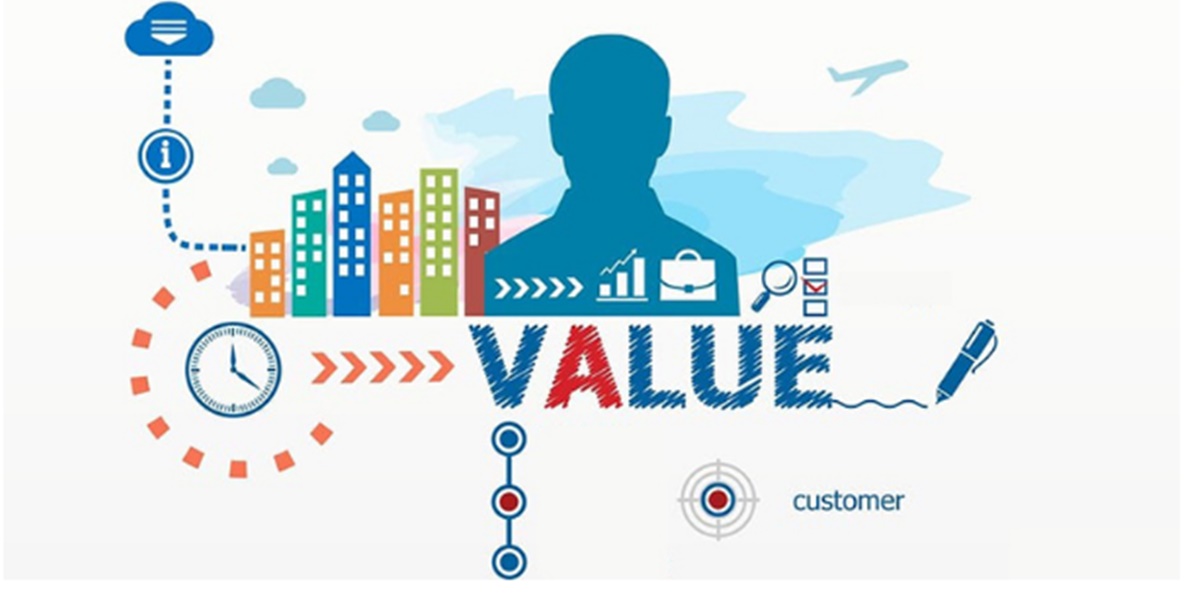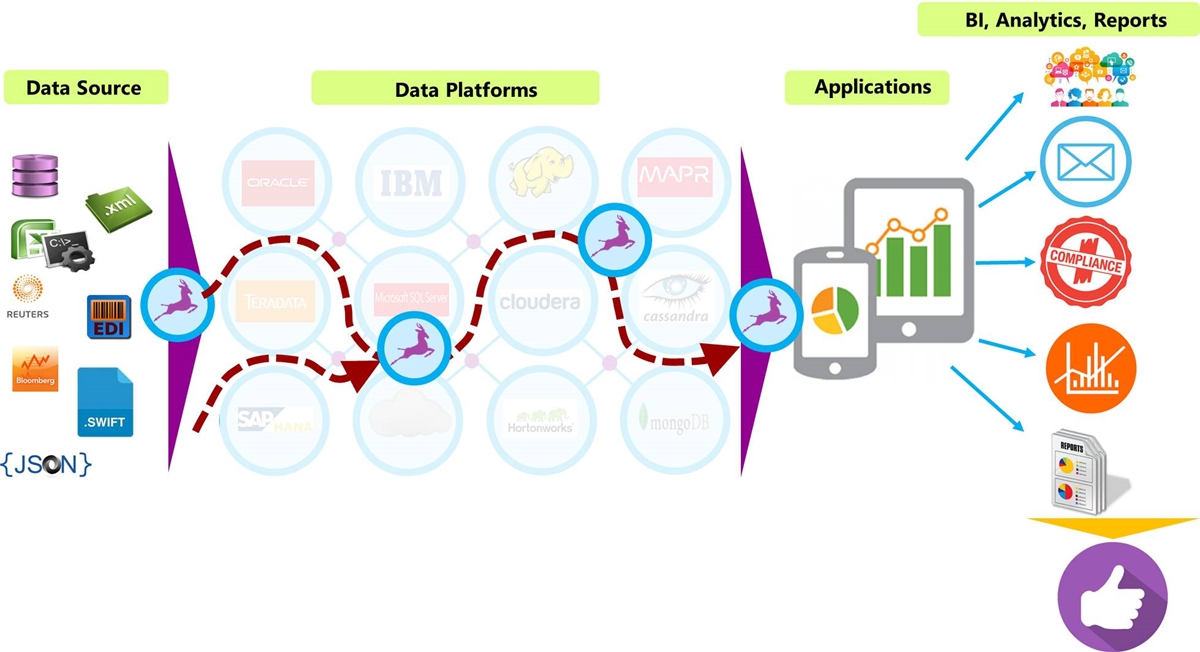Understanding Customer Value: The key to Customer satisfaction and loyalty
In this world, customers always compare their perceived value of similar products when they are about to make a purchase decision. You can meet this case everywhere. From deciding on a restaurant to visit, your next car, to choosing the suitable digital marketing agency that you want to use. There are always multiple choices available as well as so many factors that play an important role that affects that decision. So, brands must try harder to generate and communicate the value in everything they do.
Knowing that customers will be given so many other choices, and have high expectations and little loyalty to spare if brands fail to meet them. Then, communicating value to our customers, or understanding what value really is and what it is not are important things to do. There is a short phrase for this matter, which is Customer value, which is now about subjective perceptions, which will not be able to be controlled, but it can have influence somehow.
In this article today, I will help you go through all the things that you need to understand about this Customer Value: The key to Customer satisfaction and loyalty including the definition of it, the method to measure it and develop it in your business.
What is customer value?
Customer value is defined as the satisfaction from the customer experiences or their expectancy for experience. This can be done by taking a given action relative to the cost of that action. In this case, the given action can be traditionally understood as a purchase, which could be a sign-up, a vote or a visit. Meanwhile, the cost that is in reference to anything of the customer must abandon in order to get the desired benefit for money, data, time, and knowledge as well.

According to Wikipedia, in marketing, there is the customer value proposition, which has the sum total of benefits that has a vendor promises a customer to receive in return for the customer’s associated payment. From here, a customer value proposition plays a role as the promise of potential value, which is delivered by a business to its customers as well as the reason that the customer would choose to engage with the business in essence.
Customer value is also a solid statement that features the relevance of a product offering by telling the way to solve problems or enhance the customer’s situation quality, also the difference to competitors as well.
How to measure customer value?
In order to measure value in practice, then you must have a shared understanding of exactly what value is in business markets. In business markets, value means the worth in monetary terms of the technical, economic, service, as well as social benefits that a customer company obtains in exchange for the price it charges for the market offering.
Measuring customer value is not easy. At the same time, there are bunches of equations and models for measuring it. Firstly, there are three areas that you should investigate your customer value to measure it, which are:
- Financial value.
- Predictable value.
- Soft value.
1. Find out the customer financial value

The financial customer value is so important in your measuring process, which can be defined based on turnover and costs:
-
Turnover: You need to look at your average turnover a customer per year. For example, it’s when you provide an annual subscription for your product, or when your product creates turnover once every year. Then, you should spread the turnover.
-
Marketing costs: Think about what marketing costs that you need to incur so that you can keep the customer satisfied. Then, you can directly attribute them to the customer, for instance, business gifts. There are some costs that must be spread across customers, for example, the costs incurred for events, content or e-mail campaigns.
-
Service and account fees: Additionally, there are some departments that should be included in order to make the customer satisfied. You need to determine these services and account fees such as customer service, logistics, and account management. Then, ask yourself questions about how much attention does the customer need now. For instance, you can look at the percentage from the salary of account and service employees for the answer.
-
Recruitment costs: Keeping the customer costs you, then recruiting them also does. Ask yourself a few questions like: What can you do to get the customer to come in? Through an advertisement? How does it cost you? Or how many e-mails and calls that you need before having the customer committed? It would be easier for you to figure out those costs in a reasonable way when you have a marketing automation system.
2. Determine predictable customer value
Mapping out the future customer value when you have to convert customer loyalty into hard figures is the thing that you must determine. There is the RFM segmentation available as a kind of segmentation to help you in this case for dividing your customers into groups based on their purchasing behavior like:
- How recently did the customer make a purchase?
- How often does the customer make a purchase?
- And what is the average monetary value of those purchases?
You should ask yourself those questions above to identify customer segments. After that, you will be able to analyze these customer groups like the type of agreements that your loyal, average loyal, and less loyal customers have. Then, just utilize that information in order to calculate their lifetime value, future value, and churn as well.
3. Determine soft customer value

Despite the fact that some soft customer values like satisfaction can go perfectly fine with the hard figures, however, it is still a smart way to map them out separately from financial value by contacting customers. You will be able to get:
-
Customer satisfaction (NPS): When there are more and more companies mapping out the Net Promoter Score (NPS) and asking customers whether they would recommend them. However, there is a more engaging question, which is the reasons why they would recommend you. Determine this factor by asking some questions like: Is it the perception of the brand? It is due to the experience they had with the company as well?
-
Customer experience: You will need to finish some qualitative and quantitative research with customers. Just answer some questions like: How satisfied are they with the service? Or what do they think about your brand image? Is there any sense of added value from your brand? Or do they feel of obtaining enough attention?
4. Customer value measuring models
When you are able to determine all these elements above. Here come the measuring customer value models. The simplest equations for this matter would be:
Perceived Value = Perceived Benefits / Cost.
It means that when a given set of benefits or the cost as well increases, the perceived value will drop.
In detail, two identical products with identical exposure are only able to have a competition in cost. Two differentiated products will be impossible to compete on cost. Features are not the only factor that differentiates products as they can be differentiated based on their brand.
For example, when Toyota came out of a car, you, as a customer, would consider it to be reliable as Toyota is one of the reliable brands. When another carmaker releases a near-identical car, you will not have the same customer perceptions for that car like what you had with the one Toyota, which might make them struggle to compete.
How to build customer value models?
You will need to use Field Value Assessments for building a value model. Specifically, there will be five main steps:
1. Getting started

First is about the beginning process, which is collecting the right type of value of the research team. In that team, there should be those people who own product, field engineering, and marketing experience, as well as two or three forward-thinking salespeople. When you have the salespeople, they will be the ones who know the customer and how the offering is utilized.
Next, you should move to opt for the right market segment to target. As the supplier should conduct the value assessments with at least two customers so that they can generate an initial value model. So, when you choose to start with a segment, then the supplier will have the specially close, collaborative relationships with customers as well as the extraordinary knowledge of how customers utilize the offering in question or relatively simple offerings.
Then, before you approach a customer, you and your team should consider which things that customers can give and get from you so that you can be prepared to provide them with an incentive.
2. Creating a comprehensive list of value elements
Value elements are those that can have effects on the costs and benefits of the offering in the customer’s business. From this step, you should find these elements in technical, economic, service, as well as social in nature, then make sure that they are tangible in variations.
So, if you identify as various elements as you can, you and your team will be capable of estimating in a more precise way in the differences in functionality and performance as well. As a consequence, you will be able to serve by providing more options for customer, which is relative to the next best alternative.
Normally, the value research team will have to complete the trade-offs between a customer’s perception of the relevant elements and the real firsthand observe where the supplier’s offering impact on the customer. As you might not have a precise understanding of all value elements in your customer’s management. There is a program developed by Alcoa Aerospace for the company to train its salespeople in field-value-assessment methods.
What is more, the interesting thing lies in the program that can help salespeople with their reasons to approach buyers by asking them to collaborate in completing their assignments. With this program, you will be able to enhance your knowledge that applies to your own businesses provided an incentive for customers.
3. Collecting data
When you have already had a comprehensive list of value elements, then you should move on to get the initial estimates for each element, then find what is worth in monetary terms.
It is considered to be useful when you collect data by placing a team member in a key functional area of the customer’s organization for one or two weeks. As a consequence, you might be able to get a better understanding of what is actually being done and where things can go wrong in the day.
Normally, the buyers won’t be able to get the information about the data or information the supplier is looking for, and they might think this information does not exist. Actually, the kind of data that needs to be gathered in the analysis here should reside on six or seven databases or systems in different functional areas.

There is another case that only enables you to search for the data via team members to ask around until they come across the individual who knows where the information is. Specifically, there are focus groups made up of representatives from each functional area in a company, they would be an effective mechanism for uncovering data.
Also, the value research team should need creativity in getting other sources of information. The independent industry consultants or knowledgeable personnel within the supplier company can be good sources when you have just worked with them. For example, the value of social elements such as greater peace of mind is normally so challenging to express in monetary terms.
As a matter of fact, most suppliers choose not to try to assign monetary amounts to social elements. They just choose to put those elements aside and discuss them with the customer in a qualitative way when they have done presenting quantitative results.
4. Validating the model and knowing variance in the estimates
When the supplier has done creating the initial value model, it should validate it by taking additional assessments with other customers or potential customers in the market segment. By conducting further assessments, the supplier will be able to determine its value estimates as well as the understanding of the value for its market offering varies across customers’ applications, capabilities, and usage.

Moreover, when the supplier conducts additional value assessments, it will be able to promote a deeper understanding of places that it needs to use firsthand data as well as those for it to rely on customers’ perceptions. When the supplier conducts additional assessments, that person will have the chance to learn how the value its offerings provide varies across kinds of customers.
Thanks to that, the supplier will be able to generate a database that has value estimates as well as the individual customer characteristics, which might affect those estimates from all participating companies. When all the data was collected together, the supplier can look at them and then define the descriptors, which have more influence than others.
Consequently, the supplier will have the chance to pursue those customers as well as the prospective customers in choosing the offering that will set for superior value.
5. Generating value-based sales tools
Suppliers have the right to utilize value models to inform and instruct their own decision making. What is more, they also have the ability to generate persuasive sales tools. For example, there is a value case history that is the common sales tool. To go more in details, they written accounts that document the cost savings or added value that a customer gets from its use of a supplier’s market offering.
Also, there is a value assessment tool that can play a role as a service that suppliers provide in the consultative selling approach. For instance, a supplier can utilize this to generate a spreadsheet software application for salespeople si that they can use this on-site with a laptop computer to assess the potentiality in value of the offering to a specific customer.
How to develop more and more customer value?
Increase value proposition
The value customers receive is equal to the advantages that they can get from a product or service minus its costs. So, you should first consider all the businesses that you know in the market that are providing exactly what you offer. Your value proposition is where you win them over. Then, you can enhance your value proposition by just trying to communicate what makes you different, and continually work. Specifically, there are some actions that you can do:
- Defining the aspect that you are now owning and good at.
- Determine your value proposition clearly in all your communications.
- Give your customers questions for the reason that they choose to they buy from you, then get the feedback as a mean to boost your value proposition.
- Try to quantify your value with real data.
- Attempt to deliver the benefits of your service so customers can see the value.

Segment your audience
Each customer has different opinions in value as well as the factors that they consider to be important. It is better for you to same identify what affects different segments to do so.
Based on the season, geography, demographics as well as certain product attributes, then the value can change. Just try to segment your audience depending on what they value, and edit your message to each of them. Like you can have the adult considers as value in a completely different way that a teenager does.
Don’t just focus on price
Price is an important factor, but it is not wise of you to just only compete on price with your competitors. As a matter of fact, there are many people who can immediately pay more when they get the feeling that it’s worth for them to spend money. When customers are satisfied, they will be able to perceive a lot of value in your offering as well as being interested in talking you up. When it comes to an unsatisfied customer who thinks the value is pointless for them, then even when they got you to offer the lowest price, they still are unhappy and not willing to corporate.

Hence, setting a price based on making sure that customers are receiving value is a good way to maximize your take. It’s best to be in the middle, but not the lowest, just try to communicate value at a win-win price to customers.
Focus on the customers provide the greatest value
Your resources, service teams, as well as salesforce are unable to spread evenly among your entire customer base, not to mention, expect a good return. So, it’s best to focus on the customers and provide them the greatest value in return with the audience segmentation that you have just identified above.
At the same time, try to push as many resources towards building relationships as possible with existing customers over acquisition. Because your customers are the source of current profits, also your foundation for future growth as well. What is more, it costs less to keep a customer than to acquire a new one. With the amazing service, you will be able to boost the lifetime customer value in the long run.
Conclusion
In the end, doing research and understanding your market well enough by breaking it down into segments, going deep into each audience segment and understand their most pressing needs as well as what they find valuable are an effective method in building a strong value proposition. I really expect these words will give you something to think about, a simple takeaway that will impact your business in a meaningful way.
Hopefully, my article today about Understanding Customer Value: The key to Customer satisfaction and loyalty has offered you enough information to start the process of defining your customer value. If there is anything that you are having trouble with, don’t be shy to contact us. We will help you with that.
You Might Also Like:
New Posts






